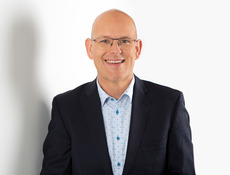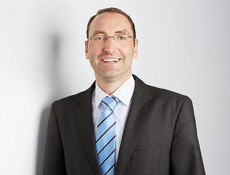
Getty Images/iStockphoto/Alija
The German population is becoming more tolerant of diversity, but polarization is increasing
Two studies examine attitudes toward diversity in Germany.
How open to the world is Germany? Tolerance over the course of time
In a longitudinal comparison of population surveys from the 1980s to today, Marc Helbling and Oliver Strijbis detect a trend toward increasingly open and tolerant attitudes. For example, in 1990, 64 percent of Germans surveyed believed that German citizens should be given preference to foreigners on the labor market. Twenty-three years later, that share had declined significantly to 43 percent. As compared to other western European countries too, attitudinal values in Germany are around the average level. Yet a gap between societal elites (e.g. decision-makers in companies and society) and the average population is evident in Germany too: For example, in the overall population, around 45 percent of people believe that strict limits should be placed on immigration, while among representatives of the societal elite, only about 5 percent hold this opinion.
While immigration and integration were already key matters of political debate in other western European countries in the late 1990s and early 2000s, domestic and socioeconomic issues dominated the elections of the post-reunification era in Germany. The debate over asylum that had drawn so much attention in 1990s Germany had since ebbed without providing any right-wing or right-wing-populist party a significant boost. To be sure, the potential for a right-wing populist party to gain a foothold in Germany has been in existence since the middle of the 1990s. However, compared to other European countries, the scope of this potential has been only average or even below average in Germany.
Nevertheless, with the euro and financial crisis that has lasted since 2008, as well as the influx of refugees that began in the summer of 2015, the lines of conflict between openness and isolationism are now at the heart of political debates. As a result, previously latent or embryonic views and attitudes have begun to resonate in public debates. Paradoxically, this means that, observed over the long term, the public and political representation of intolerance has become greater, despite growing tolerance and a greater acceptance of diversity among the population. This carries the risk that public opinion, driven in part by public discourse, could swing back in the other direction. Furthermore, there is danger here of an increasing polarization between those who support diversity and those who oppose an open society.
An unease with diversity
In early 2017, the infas Institute for Applied Sciences, a research group, interviewed more than 5,000 people across Germany on the topic of social coexistence in Germany. The resulting data were used initially for a study entitled “Social Cohesion in Germany 2017,” which was published in December of last year. However, this rich store of data also made it possible to take a more precise look at those people in Germany who are currently more skeptical or even hostile toward diversity than the average.
The authors show that relatively strong opposition to diversity is concentrated particularly in the formerly East German federal states and in economically weak regions. People who oppose diversity to an above-average degree are also situated below the average economically, both in their own estimation and objectively.
An above-average degree of opposition to diversity is also associated with other attitudinal patterns relevant to community cohesion. For example, these individuals also show lower levels of trust in societal institutions and in other people. In addition, their general levels of life satisfaction are lower, and their social networks are smaller. It is little surprise that this group’s assessment of the refugee situation is significantly more negative than the average.
A typology of opposition to diversity
The large sample size of 5,000 respondents enables the identification of four types of person characterized by a negative attitude toward diversity, with significant differences in each group’s magnitude and social and motivational structures. The authors have called these four groups the “doubters,” the “insecure,” the “frustrated” and the “outsiders.” At a fundamental level, the average separates the respondents into 61 percent who are at least somewhat in favor of diversity, and 39 percent who oppose it to at least some degree.
While certainly opposing diversity to an above-average extent, the doubters, accounting for 10.5 percent of all respondents, are the most moderate of the four identified groups. These individuals tend to be socially well integrated and socioeconomically secure conservatives, whose skepticism is fundamentally rooted in their core values. They are engaged with and basically trust political and societal institutions. The opposition to diversity is somewhat stronger among the insecure (16.3% of all respondents). These individuals are rather apolitical, locally rooted and socioeconomically in a stable position. Their stance is characterized by unease regarding global developments with uncertain outcomes, such as the rising refugee numbers or the European crises. Their opposition to diversity is primarily fed by these concerns over the uncertain outcome of societal changes.
Opposition to diversity is significantly stronger among the so-called frustrated (7.8% of all respondents). This group, which is disproportionately concentrated in eastern Germany, is characterized by a high level of personal dissatisfaction, strong feelings of injustice and comparatively limited personal resources. The group’s members tend to hold precarious socioeconomic positions, while living in rather structurally weak regions. However, they do maintain connections within their social environment.
This latter aspect is one of the key differences relative to the outsiders, the smallest group with an overall share of just 4.2 percent of respondents. These individuals, too, have a low socioeconomic status; often unemployed, their level of education attainment is also often low. Additionally, their social connections tend to be weak. Their view of the world is informed by tensions, conflicts and a sense of injustice. They too describe their immediate environment as being difficult, characterized by social problems and a low degree of cohesion.
Conclusion
The two studies show that openness to diversity in the German population has become greater over the long term. However, an increasing degree of polarization is evident between advocates of openness and advocates of isolationism. Currently, strengthening societal cohesion is high on the political agenda. A key aspect here is the question of how to attain community cohesion in a society that in reality has been diverse for some time. Thus, as efforts are made to strengthen cohesion – whether by means of policy or civil society – the previously cited assessments make it clear that the groups who regard diversity skeptically or oppose it altogether are by no means homogeneous. Indeed, they come from very different backgrounds. This differentiation is important in dealing with the issue of diversity. For example, the group of doubters is certainly skeptical toward growing diversity but appears ready to try to come to draw on democratic values while coming to terms with it. In this regard, efforts such as those proposed by the Council for Migration to promote discussion about an immigration society that is underpinned by guiding principles (“Leitbild”) could focus on this area.
Among the insecure, it is fears of personal socioeconomic decline and associated worries about the future – largely tied to globalization, digitalization and the attendant accelerating change – that feed objections to diversity. Ensuring political stability and security while, at the same time, facilitating opportunities for contact and exchange between majority and minority populations is necessary to reducing prejudices among this group.
For the frustrated and outsider groups, the objective should be to improve the acutely precarious socioeconomic conditions that feed opposition to openness, while expanding group members’ opportunities for social participation. However, because some people in this group presumably have a broadly stable world view that ranges from a closed xenophobia to outright racism, it may not be immediately possible to have an open debate with them regarding diversity and political participation. Grounds for optimism lie in the fact that this group is overall comparatively small.




